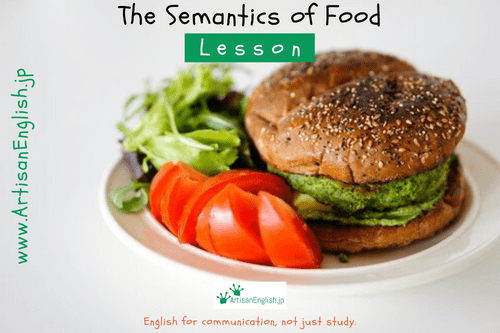
Lesson: The Semantics of Food
Thank you very much for your interest in this lesson. I hope you’re not feeling hungry because this topic is about food. English is a fluid, flexible language. New words are adopted every day, meanings of words morph and change over time, and little-used words fall out of flavour. (It’s a play on words!) No, I mean favour. (Ha, ha!) Often, it’s the latest trends and technology that have the most influence on how the language evolves. This fact leads us to today’s topic: What is meat? Can non-meat but meat-mimicking products be called meat? There’s an ongoing battle between the meat industry and the up-and-coming imitation meat industry. It’s not a unique battle. Traditional milk producers have been battling soy milk, oat milk and other milk-like producers over the word ‘milk’ for decades. As you read these articles, consider the semantics of naming these new products. Ask yourself – What’s in a name?
YouTube / iTunes / Spotify / Radio Public / Pocket Casts / Google Podcasts / Breaker / Overcast
Listen to ArtisanEnglish.jp posts & lesson intros here.
Example Article
Each conversation topic is based on a theme. In order to help students acquire a basic understanding of that topic, four media articles are provided for them to read. I will never test you on the articles, but I strongly suggest you book lessons far enough in advance to give yourself enough time to properly prepare. The better prepared you are, the more benefit you will receive from our conversations.
Below is an example article for this conversation topic.

